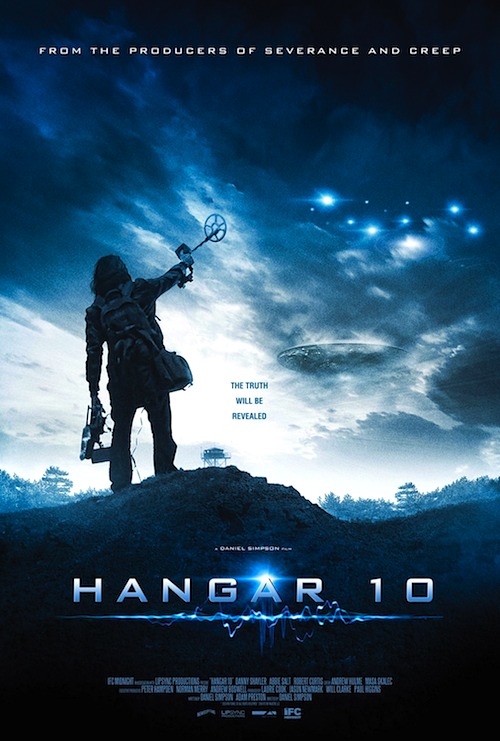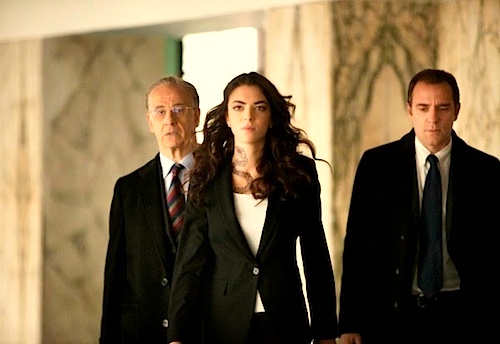By Joe Bendel. The Rendlesham Forest “Incident” is often dubbed “Britain’s Roswell,” so you know it must be pure hokum. Nevertheless, ostensibly grown adults really believe there was some sort of UFO cover-up going on at the old RAF Woodbridge while the USAF was in residence. To feed conspiracy theorists’ persecution complexes, Rendlesham gets the found footage horror treatment in Daniel Simpson’s Hangar 10, which opens late night tonight in New York at the IFC Center.
Sometimes there is a good reason found footage was lost in the first place. In this case, Gus heads into the woods with his girlfriend Sally and her ex, would be filmmaker Jake, who will document their efforts prospecting Saxon gold for YouTube posterity. This has to be the first extreme metal-detecting film—and hopefully the last.
 Of course, things are highly awkward from the start and get even edgier when strange lights start appearing. No abductions yet, just lights. Basically, for the first forty-five minutes, Gus and Jake stagger around saying things like: “Hey, did you just see that? But what’s with you and Sally anyway?” At this point, the audience would find alien abduction to be a relief.
Of course, things are highly awkward from the start and get even edgier when strange lights start appearing. No abductions yet, just lights. Basically, for the first forty-five minutes, Gus and Jake stagger around saying things like: “Hey, did you just see that? But what’s with you and Sally anyway?” At this point, the audience would find alien abduction to be a relief.
That said, Simpson deserves credit for stepping up his game in the third act. The sequences shot in the not-so-abandoned Air Force base have a really stark look that pops off the screen. His special effects are surprisingly well rendered, but he does not show too much here, thereby maintaining the tension derived from uncertainty. It is a shame we can’t simply lop off the last twenty minutes or so and append it to a better movie.
Frankly, Simpson is already late to the found footage party, following up his middling Saw knock-off Spiderhole with a Roswellish abduct-and-probe horror show. Devin McGinn’s not-half-bad Skinwalker Ranch got there earlier and delivered more genre goods (it also co-stars the eternally cool Michael Horse). Throughout Hangar, Simpson does not get much help from his white-bread-and-mayonnaise cast, but the design team makes the base look huge and ominous, in a crummy government-issue kind of way.
An hour after Hangar ends, you will completely forget what Gus, Sally, and Jake look like, but some of Simpson’s Woodbridge visuals will stick for a while. There are much better found footage alternatives out there, such as The Taking of Deborah Logan and the VHS franchise. If you are in the West Village with friends hoping for a horror movie fix, it will suffice, but it is not worth seeking out when it starts its ‘round midnight screenings tonight (11/7) at the IFC Center.
LFM GRADE: C-
Posted on November 6th, 2014 at 10:28pm.

